When it comes to gardening, I’m all for getting started on a shoestring.
I order from seed catalogs, make newspaper pots for seed starting, recycle household containers for seedlings, reuse egg shells and egg cartons to start seeds, and scour the dollar store for cheap seed starting supplies.
But where I feel I get the most value, especially if I’m starting hundreds of seeds (which isn’t hard to do in a season when you think about it), is in making my own seed starting mix.
Disclosure: If you shop from my article or make a purchase through one of my links, I may receive commissions on some of the products I recommend.
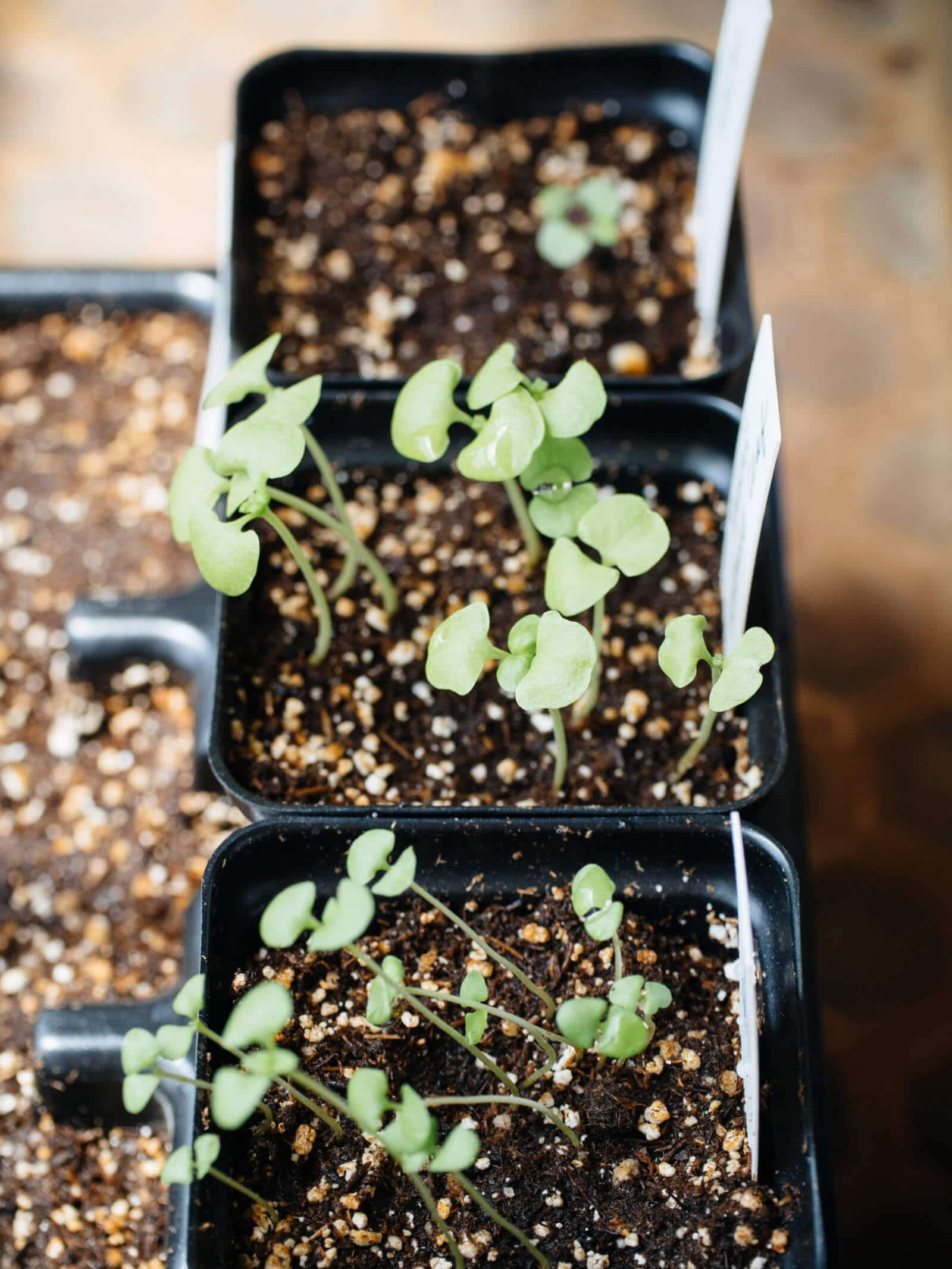
What is seed starting mix?
Go to a nursery and you’ll realize two things about seed starting mixes.
First, they’re relatively expensive. Sure, the price tag on a typical 8-quart bag doesn’t seem too bad, but then you bring it home and realize that 8 quarts isn’t really going to cut it when you have a whole flat of seeds to sow.
Second, some seed starting mixes contain chemical agents to hydrate the soil or supplements to supercharge your plants, which—for starting seeds—are completely unnecessary.
This is because all the nutrients that a seedling needs in its initial stage of life (before it develops its first true set of leaves) is contained in the seed. Think of it like an egg yolk for a baby chick.
A seed does not need fertilizer, compost, or beneficial microbes to germinate, nor does a seedling need any of that to grow healthy and strong in the first couple weeks. (You can read more about seed to seedling anatomy in this post—it’s truly amazing how self-contained seeds are.)
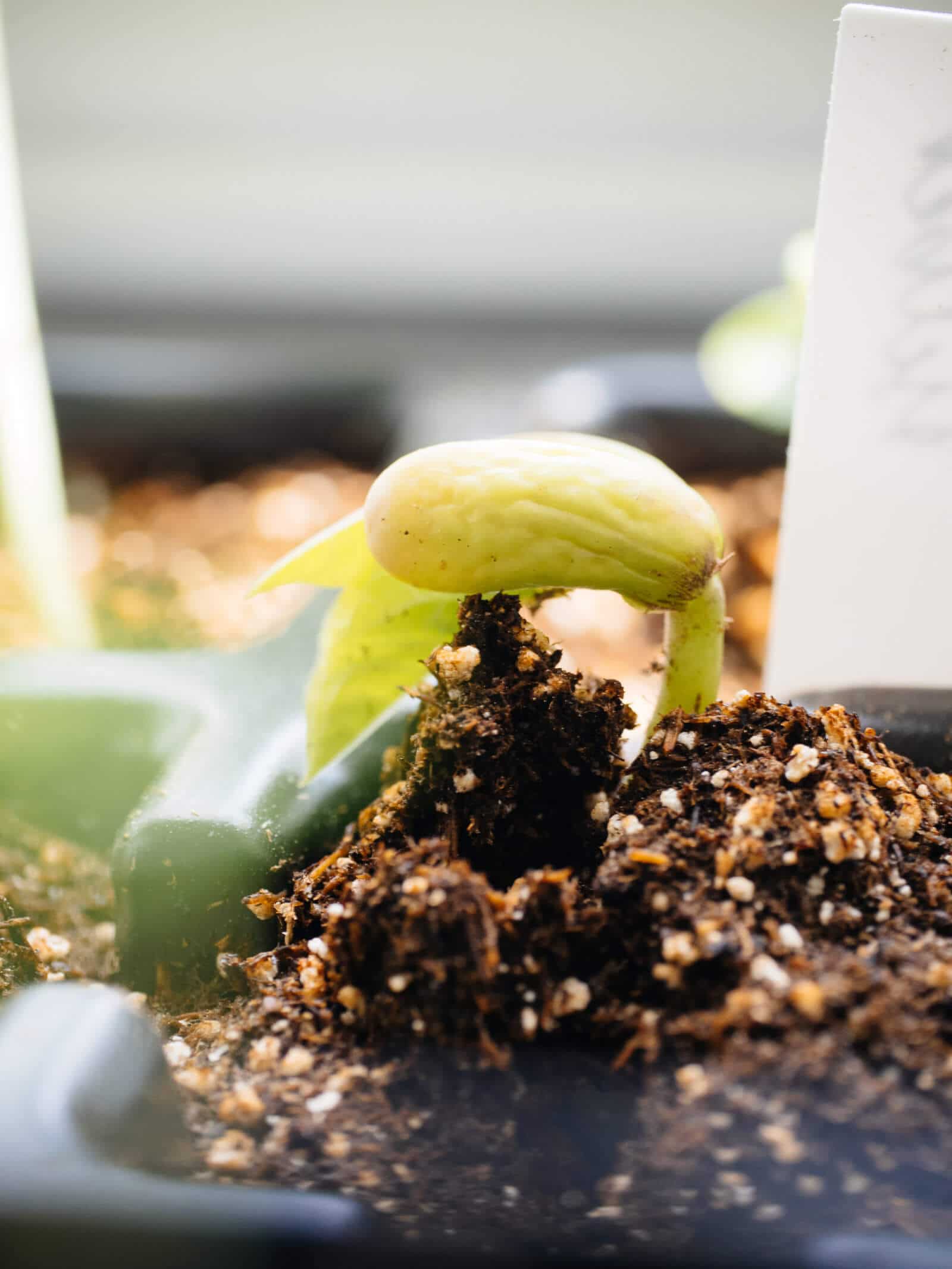
Soilless seed starting mixes should only contain three ingredients — and you read that right, soil is not one of them.
I remember being confused when I first learned about soilless mixes. How does a plant grow without soil?
It all comes down to starting seeds versus growing plants. In the beginning, seedlings just don’t have the same needs their grown-up selves do.
The best seed starting mix (which you’ll learn to DIY below) is made of perlite, vermiculite, and sphagnum peat moss.
This blend is made specifically for seed starting, and it’s very light and fine-grained to help promote baby root growth and ensure the mix doesn’t get compacted in seed starting cells or seed starting containers (which are usually only 1 to 3 inches in size—tiny!).
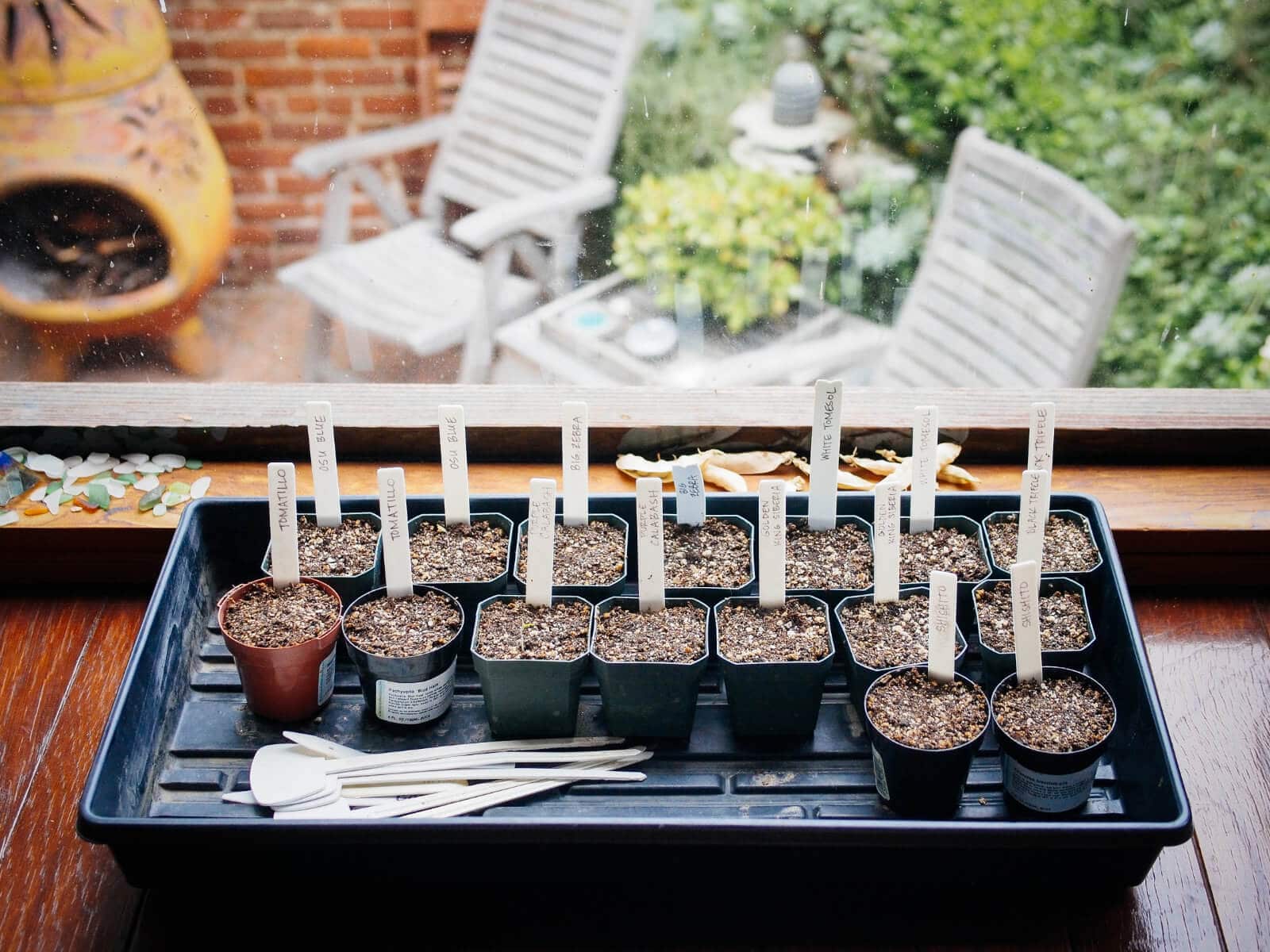
Is seed starting mix necessary?
You may be wondering why you need to use a soilless seed starting mix when you normally just plant your seeds in the garden, straight in the soil.
Here’s the thing: Garden soil has the advantage of being in the ground and living in harmony with the soil food web. It’s ideally well-draining and somewhat forgiving, as you tend to let Mother Nature take over and aren’t as obsessed over what does or doesn’t take off.
Unfortunately, garden soil tends to be too dense for seed starting and potting. It’s full of weed seeds. It’s teeming with microbes (both good and bad) and because they’re now constrained in an indoor environment without natural checks and balances, they can wreak havoc on your seedlings in the form of damping off or fungal diseases.
If you’re going to put forth the effort to start your seeds indoors, nurture them, and harden them off until it’s time to transplant, seed starting mix will give you greater success rates so you don’t waste seeds (or time).
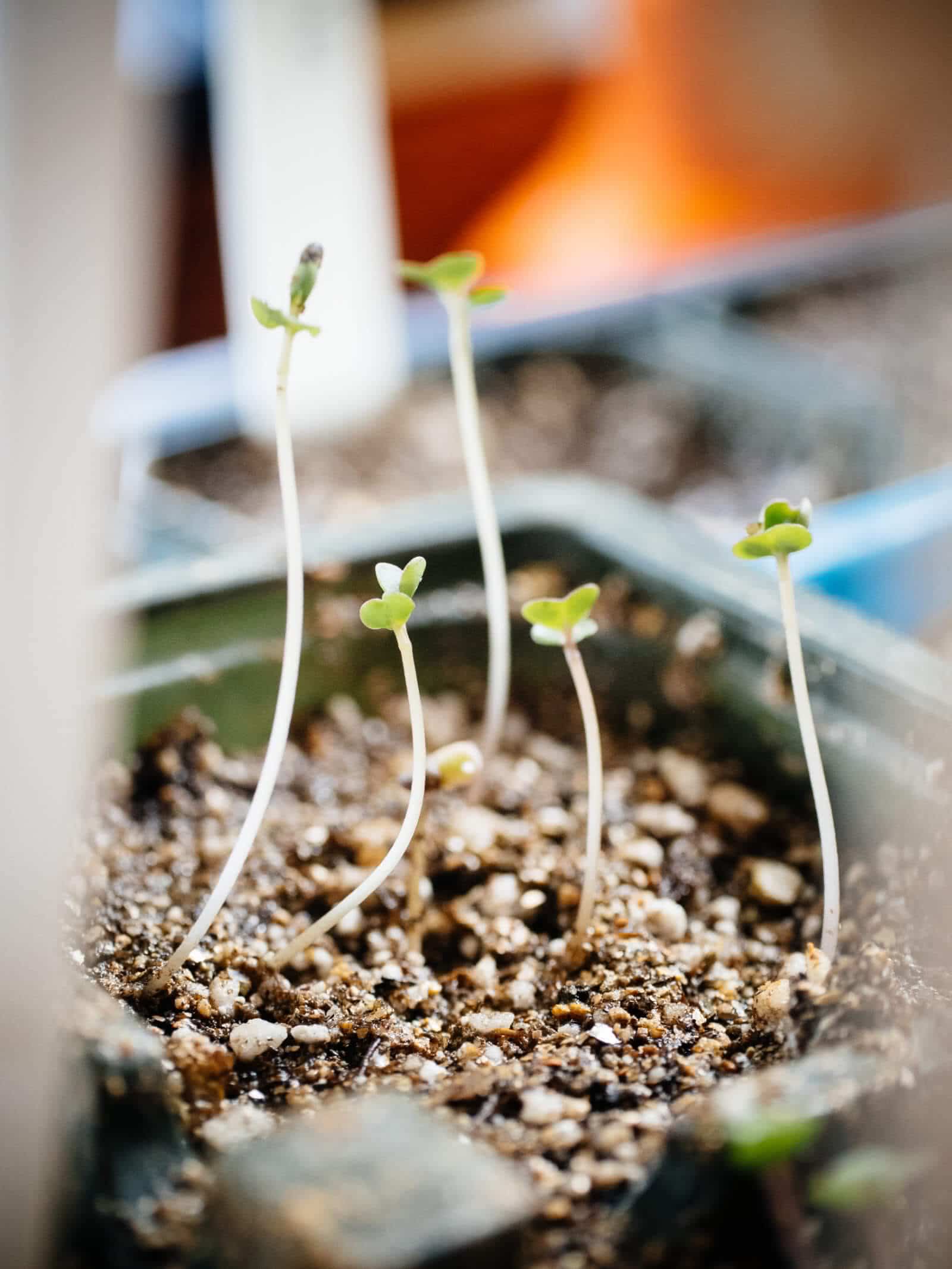
What’s the difference between potting soil and seed starting mix?
Generally speaking, potting soil is a growing medium that contains topsoil (in other words, plain old dirt) and some combination of bark, perlite, vermiculite, peat, humus, manure, and/or other fertilizers.
Potting mix is a similar growing medium that’s usually soilless, though commercially, you may find the terms are interchangeable and refer to the same thing. (You should always check the label of any bag you buy.)
Potting soil and potting mix aren’t ideal for seed starting because:
- They have a coarser texture than seed starting mix, and you’ll often find chunks of bark in potting soil.
- They don’t drain as well as seed starting mix.
- They’re sometimes too rich in nutrients.
It’s not the end of the world to use potting soil or potting mix to start your seeds, but you’ll be paying a premium for ingredients that aren’t needed for germination.
On the other hand, if you don’t want to mess with repotting seedlings and just want to plant the seeds in their permanent container, you can start your seeds in a good potting mix that’ll continue to help them grow sturdy and strong.
Related: How to Repot Tomato Seedlings for Bigger and Better Plants
Get my recipe for homemade potting mix below.

The best DIY seed starting mix needs only 3 ingredients
That’s the benefit of making your own seed starting mix at home—no synthetic fertilizers or synthetic wetting agents to worry about, just simple organic ingredients to get your seeds off to a great start.
Together, these ingredients provide the perfect level of fluffiness, drainage, and moisture retention for starting seeds.
- Sphagnum peat moss (not to be confused with the coarser and more fibrous sphagnum moss that’s typically used to line floral baskets) is an excellent, sterile, moisture-retaining medium. The finer the fiber, the more water-holding capacity it has.
An alternative to peat moss is coco coir. This material is similar to peat in terms of look, feel, and moisture retention, but is made from the fiber of coconut shells. - Perlite is an ultra lightweight volcanic glass resembling white popcorn ceiling, and it provides drainage and aeration.
- Vermiculite is a natural micaceous mineral, brownish and granular in appearance, with water-absorbing properties that facilitate re-wetting of the soilless mix.
All three ingredients are easy to find at most garden centers, but I’ve also linked my favorite sources online (below) if you can’t find them at your local nursery.
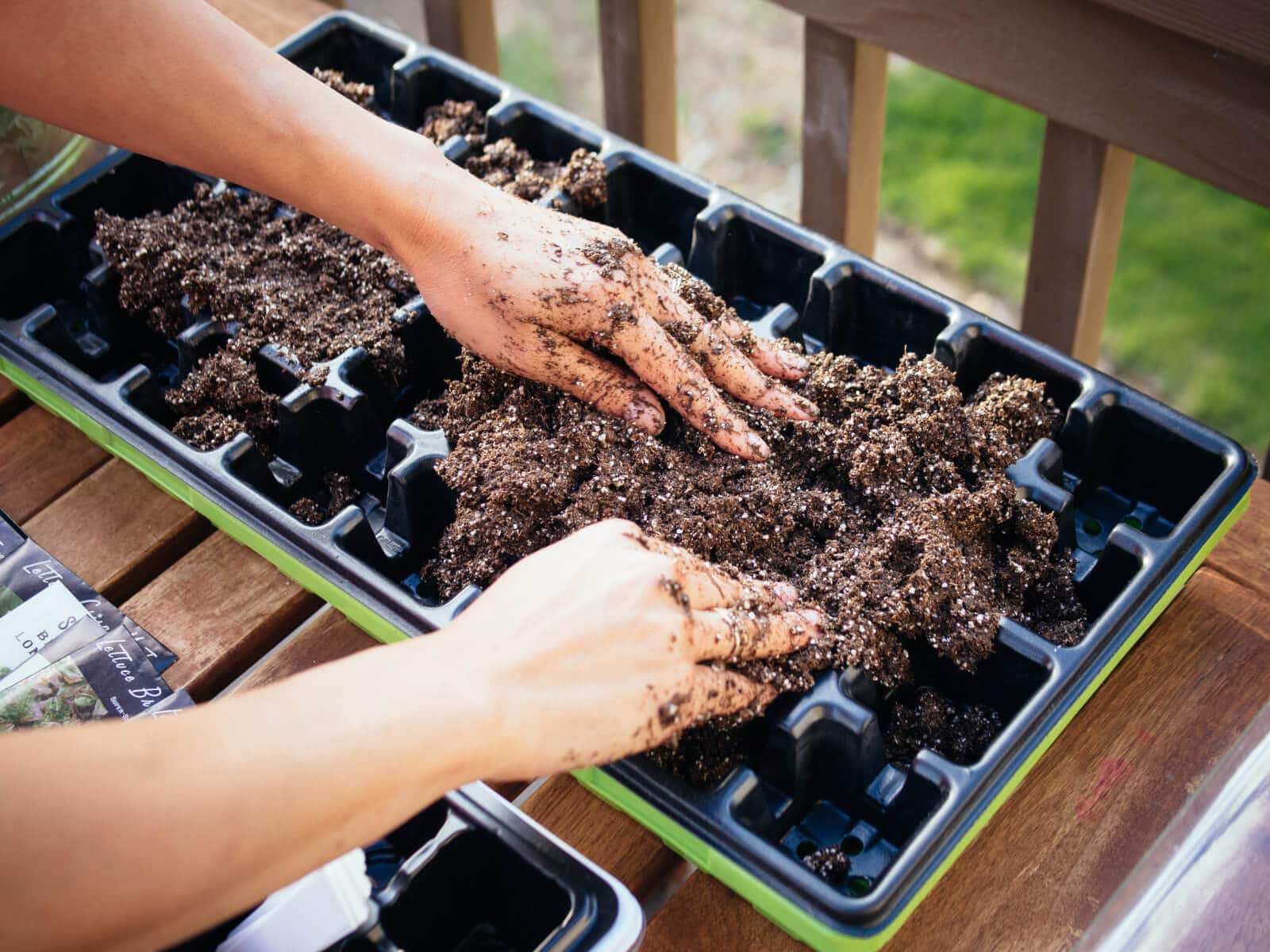
Basic Seed Starting Mix Recipe
- 1 part sphagnum peat moss (or coco coir)
- 1 part perlite
- 1 part vermiculite
A “part” refers to any generic unit of measurement to make the quantity you need, as long as it’s consistent: a scoop, a bucket, or a bag of each ingredient.
Combine all the ingredients in a clean tub or bucket, and saturate the mix with water. Stir the mixture with your hands or a trowel until it’s thoroughly moistened but not soggy (like a wrung-out sponge).
Add as much water as the mixture will absorb. You might be surprised to see how much it holds—peat moss can absorb 16 to 26 times its weight in water.
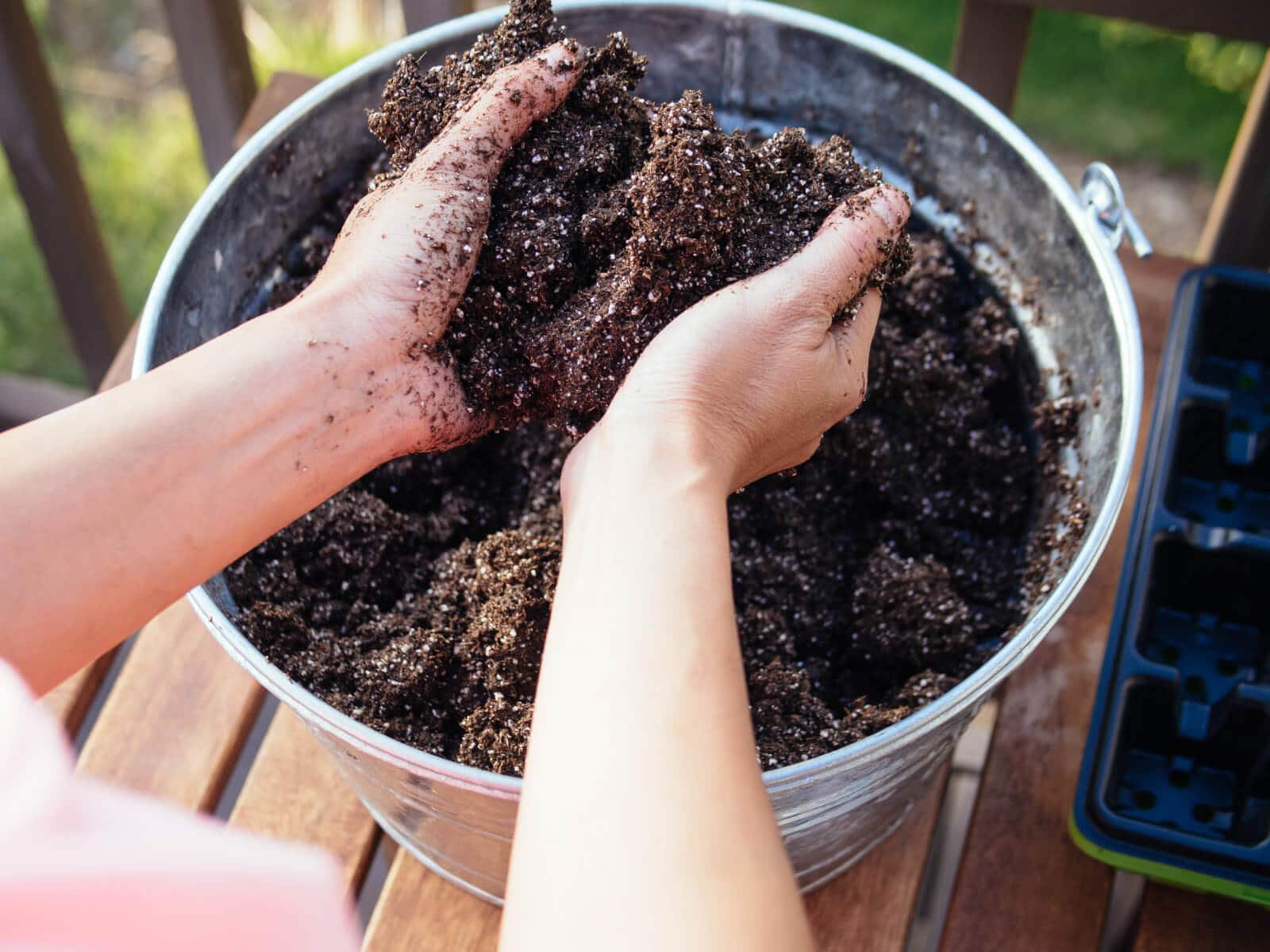
This initial watering makes it easier to keep the mix uniformly moist throughout the seed starting period, as peat moss can be difficult to re-wet if it’s been left to dry out.
Fill your seedling pots with the homemade seed starting mix, add seeds, and sprinkle a thin layer of vermiculite over your seeds if they need darkness to germinate. (Your seed packets should give any special instructions.)
You can save leftover seed starting mix for next season, or use it as the basis of your potting mix.
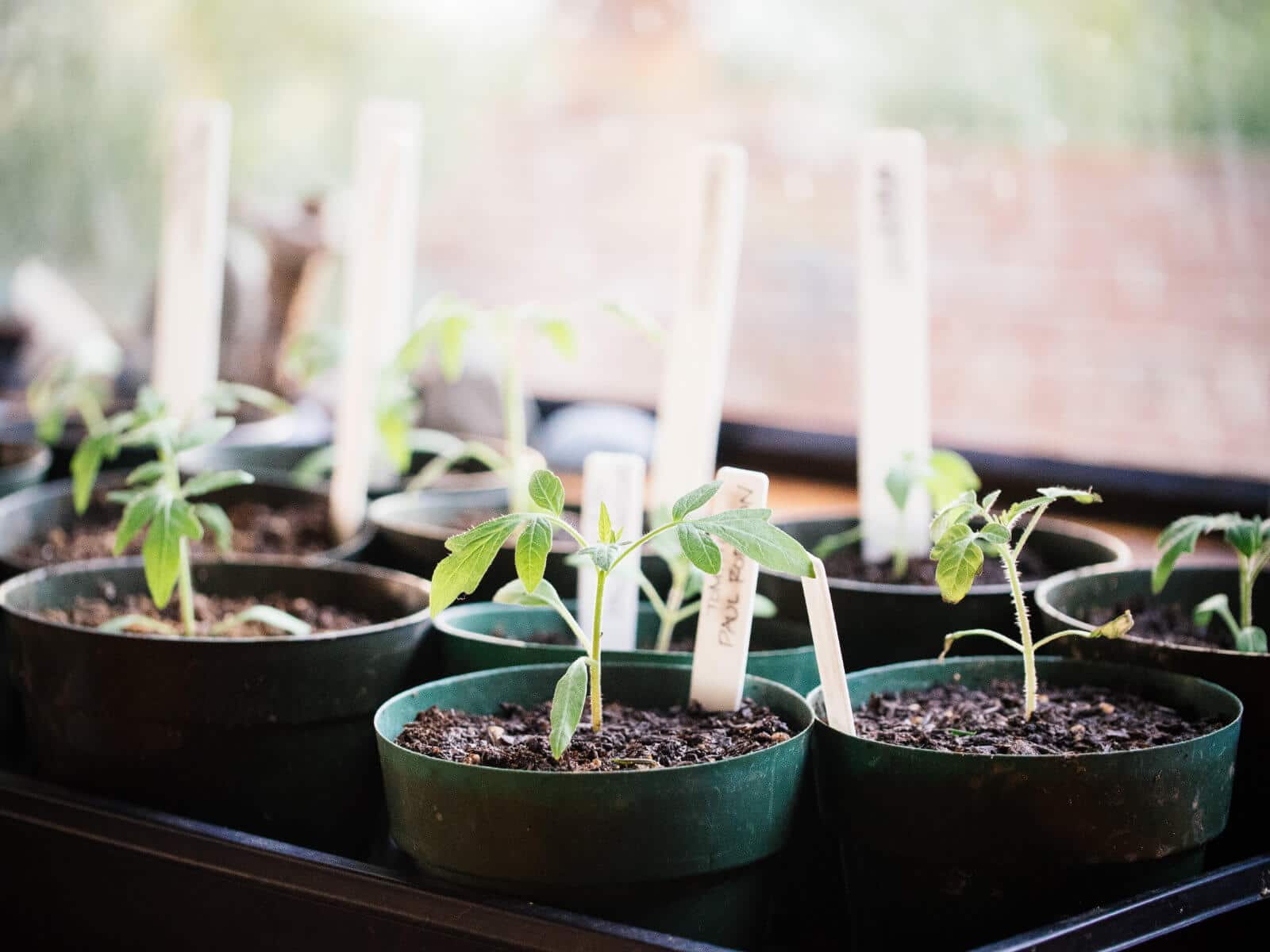
How to make the best potting mix for transplanting seedlings
With potting mix, we want to increase the ratio of peat moss (or coco coir) to up the moisture retention so our potted plants don’t dry out as quickly.
A basic potting mix is a good starter medium for transplants, but you’ll want to amend it with compost, garden lime, worm castings, kelp meal, or other supplements depending on the nutritional needs of your plants.
Basic Potting Mix Recipe
- 6 parts sphagnum peat moss (or coco coir)
- 1 part perlite
- 1 part vermiculite
Enriched Potting Mix Recipe
- 4 parts sphagnum peat moss (or coco coir)
- 2 parts compost
- 1 part perlite
- 1 part vermiculite
Enriching your potting mix with compost will help your seedlings and transplants thrive after the cotyledons die off. I like to start with well-aged compost, then add other amendments that inject a jolt of nutrients as well as increase microbial activity in the potting mix.

So just how cheap is homemade seed starting mix?
Let’s do a little math here and see how much we can save with this DIY.
A well-known brand of seed starting mix from a big-box garden center runs about $5 for an 8-quart bag.
While that doesn’t sound like much, note that 8 quarts is only 0.27 cubic foot.
Buying the individual ingredients from the same store means I can make a little over 1 cubic foot of DIY organic seed starting mix for around $8.
The same amount of pre-made seed starting mix from the national brand costs $20. That’s more than double the cost for a product that’s ridiculously fast and easy to make.
Some people might feel a little hesitant about the initial investment (2 cubic feet of vermiculite = $20, 2 cubic feet of perlite = $17, 3 cubic feet of peat moss = $12), but a little goes a long way.
If you keep these ingredients dry, they’ll never go bad and you’ll have plenty for your seed starting and potting needs.
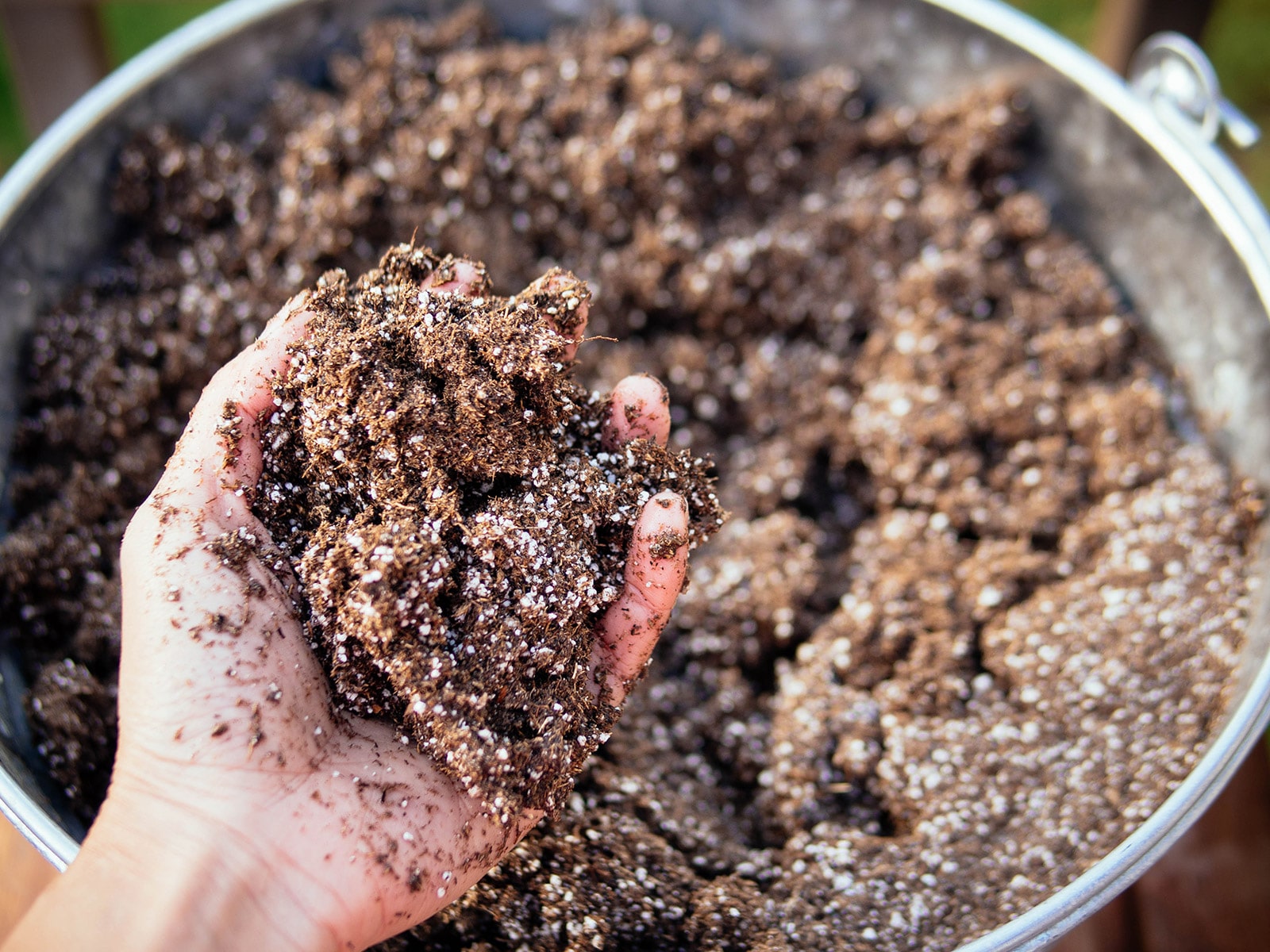
Common questions about seed starting mix and potting mix
Does seed starting mix or potting mix go bad?
Since seed starting mix and potting mix are soilless mixes, they don’t “go bad” or expire if they’ve been properly stored in a dry location. You can still use these mixes years after you make or buy them, but with one caveat.
One of the main ingredients in seed starting and potting mixes—peat moss—is an organic material that naturally decomposes over time. It doesn’t have a very long shelf life and after one or two years (from the time you purchase it), the fiber starts breaking down, making it ineffective at its primary job: to hold moisture.
Expiration in this case doesn’t mean the peat turned moldy or smelly (and it doesn’t as long as it’s been kept dry)—just that it loses its structure.
So while you can still use old seed starting mix or potting mix past its “expiration,” you’ll likely have to replenish the peat to maintain its water-holding capacity.
Can you reuse seed starting mix or potting mix?
You can reuse seed starting mix or potting mix as long as you didn’t have any problems with pests or diseases.
Let the old seed starting or potting mix dry out before storing in a bucket, storage bin, or clean trash bin, and keep it dry until you’re ready to use it again.
You’ll likely only get one reuse before the quality of the seed starting or potting mix is diminished, since one of its main ingredients, peat moss, is a natural fiber that breaks down over time (especially if it’s been wet).
What can you do with old seed starting mix or potting mix?
Old seed starting and potting mixes that need to be rejuvenated can be mixed in with new soilless mixes to give them a second life. They can also be added to your garden soil to help improve soil structure. (In either case, just make sure they’re free of any pests or diseases so you’re not introducing problems to new plantings.)
But if you don’t plan to reuse your seed starting or potting mix, you can just add it to your compost pile and let it break down naturally.
Do you need to sterilize seed starting mix or potting mix?
I don’t recommend sterilizing your seed starting or potting mix because it puts your seedlings and plants at a disadvantage from a biological standpoint.
Sterilization kills all bacteria—both good and bad. Without these microbes providing natural checks and balances that weed out weak plants and strengthen the healthy ones, your plants—which have been coddled in a “perfect” sterile environment inside your home—become unable to fend for themselves once they’re out in the garden.
3-Ingredient Organic Seed Starting Mix

The best DIY seed starting mix has only 3 ingredients. Save money and get my no-fail recipe for organic seed starting mix you can easily make at home.
Materials
- 1 part sphagnum peat moss (or coco coir)
- 1 part perlite
- 1 part vermiculite
Tools
- Clean tub or bucket
Instructions
- Combine all the ingredients in a clean tub or bucket, and saturate the mix with water.
- Stir the mixture with your hands or a trowel until it's thoroughly moistened but not soggy (like a wrung-out sponge). Add as much water as the mixture will absorb.
- Fill your seedling pots with the homemade seed starting mix, add seeds, and sprinkle a thin layer of vermiculite over your seeds if they need darkness to germinate. (Your seed packets should give any special instructions.)
Notes
A “part” refers to any generic unit of measurement to make the quantity you need, as long as it’s consistent: a scoop, a bucket, or a bag of each ingredient.
Where to buy seed starting mix
[show_shopthepost_widget id=”3916499″]
Black Gold 8-Quart Canadian Sphagnum Peat Moss Plus | Premiere Horticulture 1-Cubic-Foot Sphagnum Peat Moss | Nature’s Premium 1-Pound Brick Coco Coir | GROW!T 1.5-Cubic-Feet Premium Loose Coco Coir | Black Gold 8-Quart Perlite | Espoma 1-Cubic-Foot Organic Perlite | Espoma 8-Quart Organic Vermiculite | Espoma 1-Cubic-Foot Organic Vermiculite | Dr. Earth 1 1/2-Cubic-Feet All-Purpose Compost
This post updated from an article that originally appeared on March 15, 2011.
View the Web Stories on organic seed starting mix.


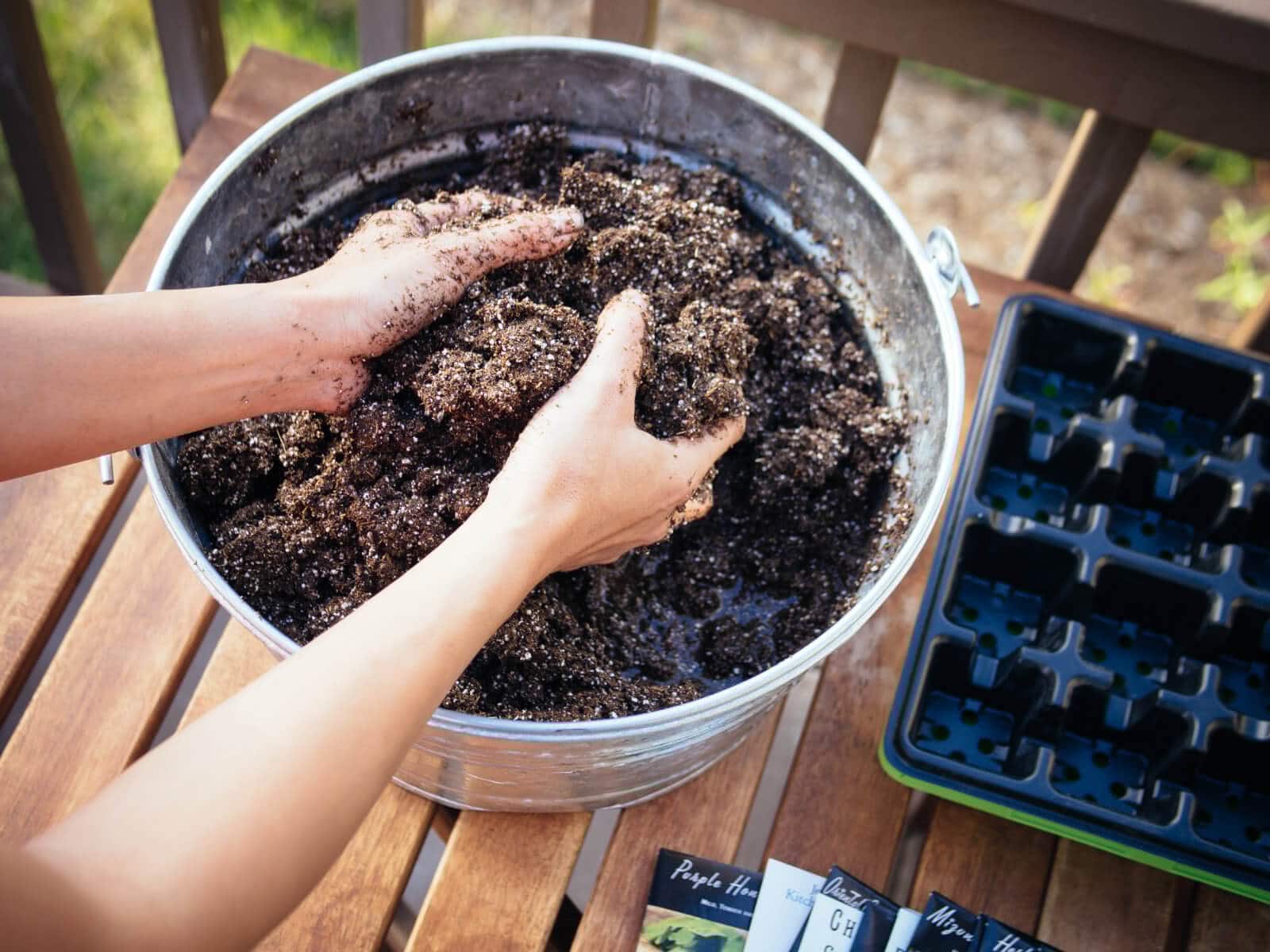













I made this mix without thinking about the pH level. Unfortunately, i have lost almost all of my seedlings. I couldn’t figure out what was wrong until I suddenly remembered that peat moss is acidic. It is between 3 and 4 on the pH scale so this mix really needs to be neutralized with lime for most plants. However, there are a few that like this level of acidity.
Actual outdoor garden soil dirt is alot cheaper and works just as well. What do you think mother nature has been using for a million years before the big box stores?
The issue is that not all outdoor garden soil is alike, and if you’re using it in seed starting pots or trays indoors (which don’t have the benefit of soil volume for drainage or ecological controls that keep things in check), you risk weeds, pests, diseases, or rot. For people already investing time and resources to start their seeds inside (rather than sowing seeds directly outside), it’s worth the extra step of using a good seed starting mix. Your mileage may vary, of course.
How about a mixture for those of us who use soil blocking? This seems like it’s too friable a mix to hold shape?
I’m surprised that the use of sphagnum peat moss is still kept in all the mixes. It’s time to move on to the alternative as the highlighted ingredient and perhaps use your platform to help others understand carbon sequestering and the harvesting and loss of sphagnum peat moss releases carbon and reduces carbon sequestering.
Absolutely agree, thanks for posting this! Peat bogs are as fragile and important to the global ecosystem as the rainforests, we really need to move away from using it. They are non-renewable and the harvesting releases tons of CO2 into the atmosphere, whereas left to grow healthy, they actually capture a huge amount of greenhouse gases. We need them to be intact more than ever.
Peat moss is horrific for the environment. Perlite is non-renewable as well and is not sustainable either. I would strongly urge you to reconsider this recipe as it’s not planet friendly. If you need a good drainage medium, for example, you can use organic rice hulls. We have a giant bag we ordered from Home Depot for a killer price as one of our soil-building basics along with coco coir, then just screen some compost into the mix to keep it light.